13. Dr. No (1962)
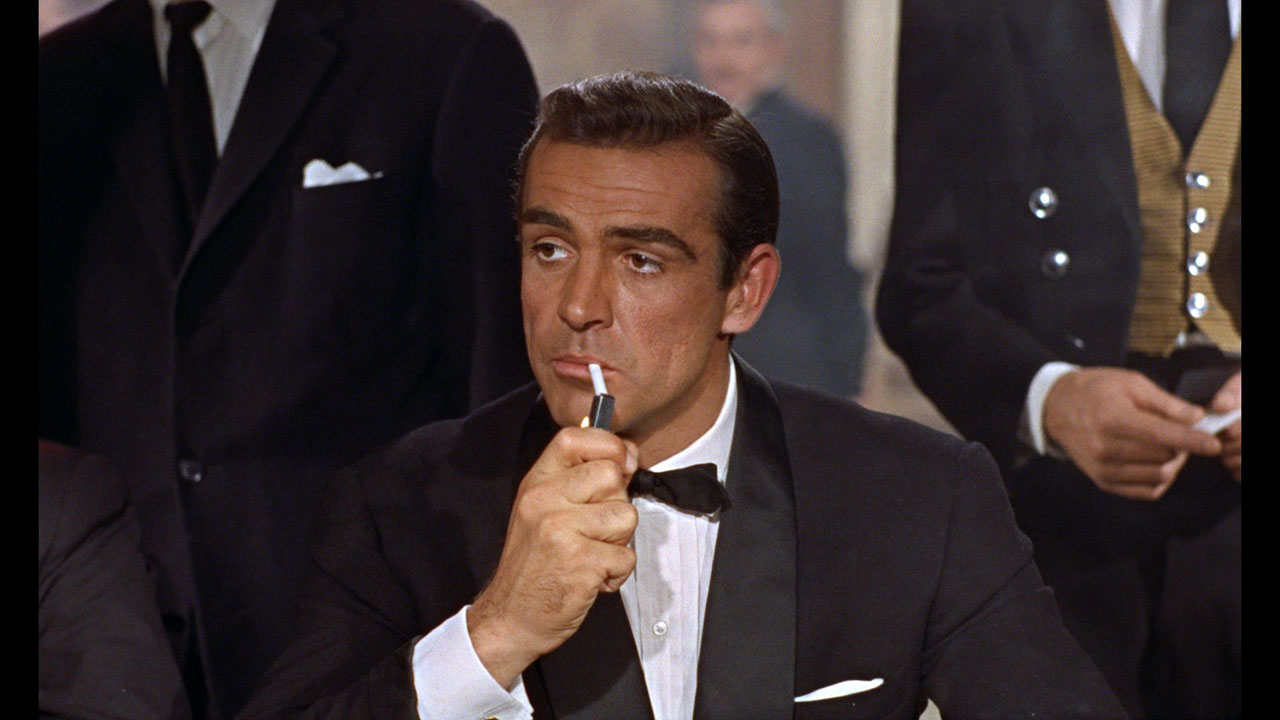
The first James Bond film ranks just shy of being in the top ten, with 007 (Sean Connery) investigating the death of a fellow agent in Jamaica and coming up against the despicable Dr. No (Joseph Wiseman). Director Terence Fisher must be applauded for not only crafting a film that is both lavish and exotic on a measly $1-million-dollar budget but managing to establish a standard of cinematic excellence and a narrative template that would launch the series from strength to strength. Wiseman is the perfect progenitor for all Bond villains to come, with a clipped cool delivery and his creepy metal hands making him memorable, while the stunning Ursula Andress is a wonderful first Bond girl to light the flame for women in this franchise who are fierce and bold – one moment stepping out of the sea in a golden bikini, then springing a knife on her purveyor the next. And of course, Sean Connery – the man who would immortalise the character of 007 into the pop cultural juggernaut he is today, the blueprint of which every actor will take inspiration from – and any man trying on a tux.
Tough as well as charming, Connery brings a charisma, lust and a powerful gravitas that would make him and the 007 character legendary, invaluably helped by Fisher’s direction, who by reports was much like Ian Fleming, sharing an eye for the exotic and luxurious which is seen to great affect in the film, from Bond’s Saville Row suits to the jamboree lifestyle of Jamaica, with its sparkling blue waters and golden surf as exotic and breath-taking today as it was in 1962. Once a land of pirates and smugglers, Jamaica was where the 007 novels were written – it contains the spirit and hedonistic lifestyle of Fleming himself. It is the perfect backdrop for the most swashbuckling of Bond films – with a mysterious dragon and hidden castle-like lair being resonant mythic components that one can’t help feel contributed to the lasting successes of the James Bond myth – a modern cinematic hero slaying dastard evils…
12. Licence to Kill (1989)
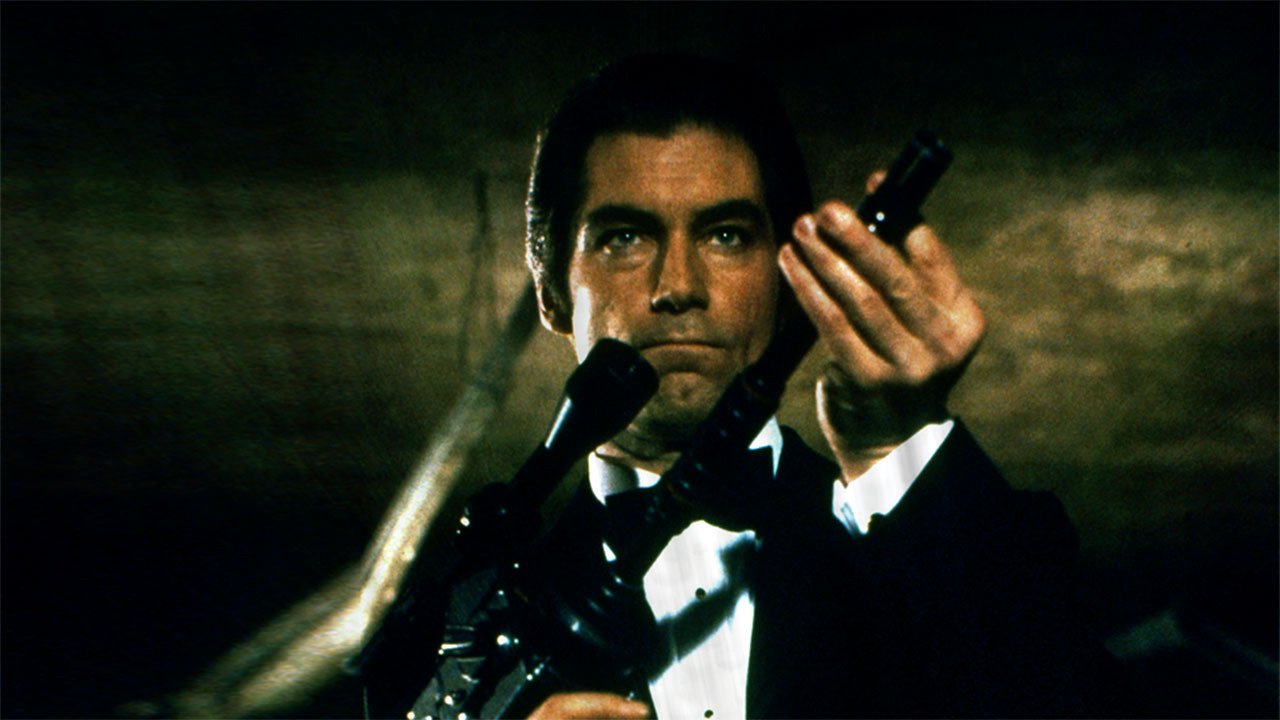
After DEA agent Felix Leiter (a cuddly David Hedison) is gravely injured by drug lord Franz Sanchez (a sadistic, lizard-petting Robert Davi) James Bond (Timothy Dalton) seeks revenge. Director John Glen tapped into Dalton’s darker sensibilities as well as the literary psyche of the 007 stories, showing sharks biting off legs, people pummelled into mixers – even a bloody moment when a head explodes. It was no doubt ahead of its time, with Bond going rogue from MI6 before it was cool, whilst without question being one of of the most Fleming-inspired outings in the series, taking heavy inspiration from novels like Live and Let Die and a number of short stories. Glen manages to remix this literary spirit within the subgenre of an 80s drug-bust that feels dirty, dire and always deadly.
This is also Felix Leiter’s finest hour in the series, with Hedison’s warm screen presence really selling his close relationship with Dalton – for fans it is a satisfying moment to finally see this bromance given the attention it deserves. It also gives Bond his first real instance of personal stakes, and extra points must be rewarded for bringing in Desmond Llewellyn’s comical Q into the field. Dalton really excelled in this film, delivering his finest take as James Bond, and will no doubt make you weep that we did not get more films following his terse Byronic portrayal.
11. Thunderball (1965)
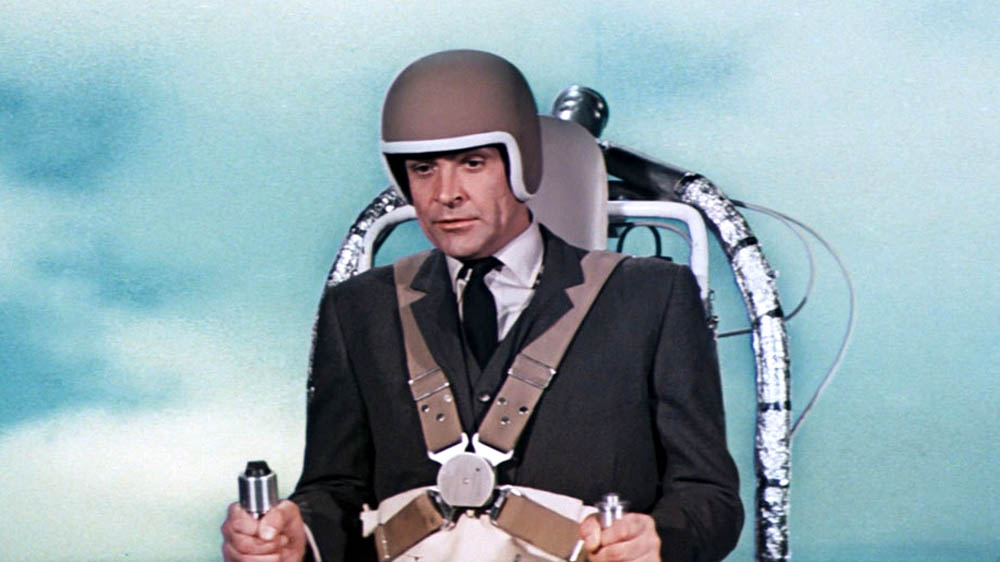
Arriving at the apex of Bond-mania that permeated the 1960s, 007 (Sean Connery) must recover two nuclear warheads stolen by Spectre agent Emilio Largo (Adolfo Celi). Celi’s eye-patched yacht-lolling villain brings a piratical air to a film that is Romantic with a capital R. Every frame could be a postcard, with the beautiful Bahamas and their confectionary of colours exuding the ultimate vacation vibe, transporting the viewer into a world of quintessential exoticism and beautiful women – Claudine Auger’s Domino being one of the most beautiful in the canon.
Connery is on top form as Bond, fresh off the monster-hit that was Goldfinger. Here he is at his most lustful and hedonistic, a turbocharged titan of testosterone, holidaying like hell and living it large, all exemplified by the man’s man’s song that is Tom Jones’s Thunderball. The mythos of the Spectre organization is given a worthy expansion and nicely explored in this entry after being teased throughout Connery’s run and reaching, arguably, its finest denouement. Overall Thunderball is a transporting masterpiece of escapism – sharks, jetpacks, underwater battles revolutionary for the time and still just as enthralling – helped by John Barry’s alchemic knack for bringing sound to things that do not have any, with his sweeping score feeling like you too are swimming deep under water…
10. Spectre (2015)
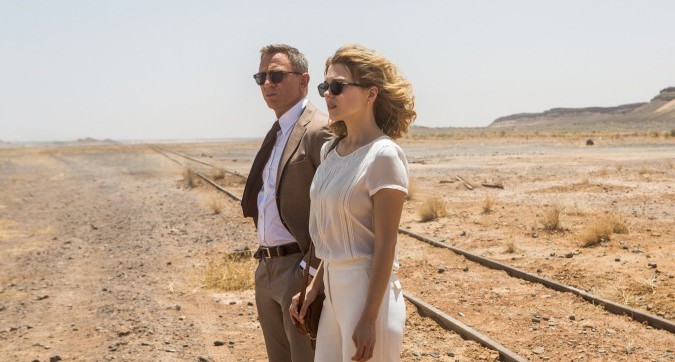
Daniel Craig’s fourth outing as James Bond sees his past catching up with him as he encounters for the first time the nefarious organization known as Spectre. Sam Mendes returns to directorial duties after Skyfall, delivering, for the first time in the Craig era, what feels like a return to a classic Bond adventure. A gun barrel sets us off to a stunning day-of-the-dead pre-title sequence, with Craig walking along a rooftop to the iconic Bond theme being one of the coolest, Bondian moments in the series. Dave Batista is a marvellous menace as the sharp-nailed henchman Mr Hinx, Monica Bellucci is a sumptuous siren as Lucia Sciarra, and Léa Seydoux is chillingly good as the icy Dr Swann – all of this wrapped up in a terrific travelogue of gorgeous locations, from the Swiss alps to the Tangier desert.
After decades of court debacles, the rights to Spectre were finally brought back to Eon and unleashed in what is a swish and swanky look at the organisation operating in the 21st century – naturally medalling with surveillance – a worthy mirror-image to MI6’s clandestine activities. But I cannot deny this is a controversial choice. However, after the success that was Skyfall, expectations were naturally very high for this film, and with a six-year wait for No Time to Die, Spectre’s nit-pickers only continued, needlessly ballooning the film’s pitfalls. Bond and Blofeld are not brothers – there is no blood relation, it is just the delusional insistence of the maniacal villain. Its choice to tie Craig’s previous films under the Spectre umbrella does not jeopardise the terrific entries that came before it, but rightfully adds to the seismic threat that is Spectre. Mendes manages to pull off a worthy follow-up to Skyfall whilst bringing classic Bond into the 21st century. Its an old-school 007 adventure dressed within a sleek modern veneer. It’s the best of both worlds, with Craig at his most sangfroid.
Spectacular!
9. Live and Let Die (1973)
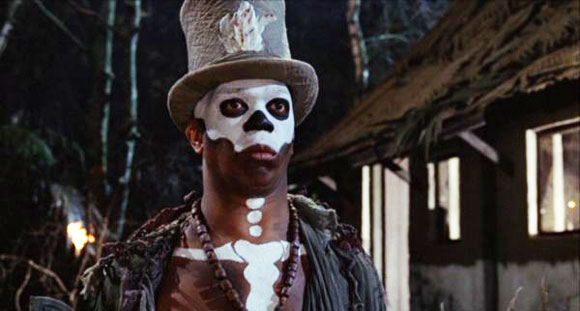
Roger Moore hits the ground running in his first outing as 007 – this time sent out to New York to investigate the deaths of three British agents, only to come across drug baron Mister Big (a commanding Yaphet Kotto) and voodoo master Baron Samedi (Geoffrey Holder). As “the only white face in Harlem” Bond has never been more of a fish out of water. The voodoo theme gives this film a suitably spooky vibe and a unique flavour among all the Bond films – the snakes, rituals and sacrifices making this the series’ perfect pick for Halloween.
There is also a noticeably brave right-turn to abandon Connery’s faded era and venture into something new and exciting – a rock anthem by Paul McCartney and Wings for one thing – new territory at the time, but now one of the many great decisions that were made for this film; not least for hiring Roger Moore as 007. Waking up next a beautiful woman establishes Moore’s Bond as the charming ladies man we will have the pleasure of knowing for seven films. In this adventure he quickly certifies himself as the wittiest and and most likable of all the incarnations; intrinsically Bond yet different to what has come before – drinking bourbon instead of martinis and smoking cigars over cigarettes.
Connery’s signatures are clearly dispelled with. And yet it all works. Moore makes everything his own, never looking better than in his black Archer-esque roll-up. It is the start of something dynamic for the series. Exploding men, magnetic watches – the silliness is stupendous, as well as its panache for being the franchise to thrill and entertain – in one instance 007 actually runs over crocodiles. Crocodiles! Actual leg-snapping crocodiles… It is insane that this stunt was actually done – but such is the spirit of Live and Let Die. With a strange spooky mese-en-scene and George Martin’s groovy soundtrack, this is a Bond film that lives – never dies – by its own rules…
8. Octopussy (1983)
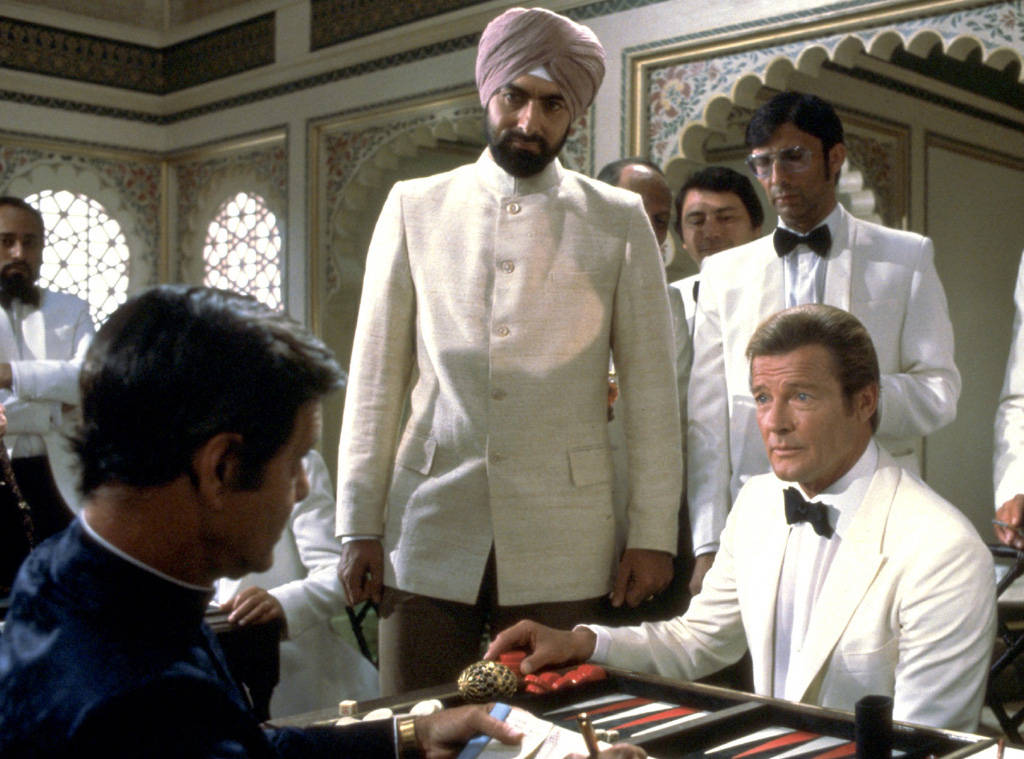
Over the years, whilst having the greatest film title of all time, Octopussy has transcended being a guiltily pleasure and has now acquired quite the fanbase that proudly champions it as one of the finest Bond adventures out there. It aims to be the best standard Bond film it can be – nothing more – and director John Glen makes sure it is. What starts off as a mystery of fake Fabergé eggs leads to a possible cataclysmic nuclear attack on Nato if James Bond (Roger Moore) doesn’t stop it in time. The film is simply an awesome adventure, brimming with breezy unabashed fun. Octopussy herself (Maude Adams) is head of a balletic gang of female fighters and is easily Moore’s best Bond girl. A globe trotting mystery takes us from a Berlin circus to an Indian fortress.
In this one outing Bond dresses up as a clown, a gorilla and a crocodile – but still manages to sell an epic serious cold war thriller at the same time. Bond and Q taking on a base of mercenaries with a hot air balloon emblazoned with the union jack – cinematic gold! And Louis Jordan as villain Kamal Kahn is Moore’s best nemesis, appearing as the perfect dark side to this incarnation of 007, being equally smooth, silky and cunning. For some fans of the franchise, Moore stayed too long as 007 – but I will always be glad he made this film, delivering what is for me and many others an all-time-high.
7. You Only Live Twice (1967)
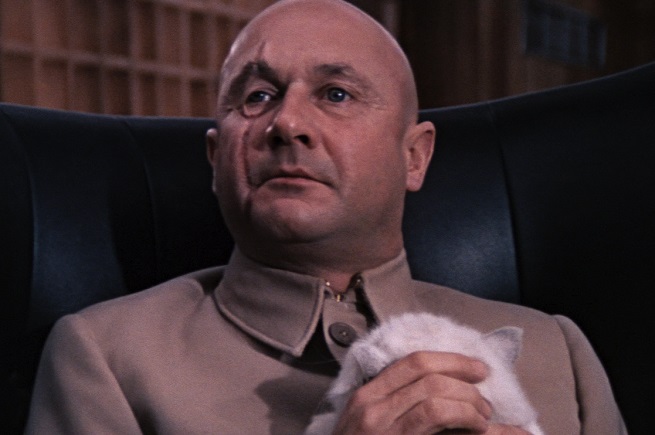
Sean Connery returns as 007 before his brief hiatus from the series, this time hunting down a Spectre-stolen space capsule in Japan before the possible advent of WWIII. Director Lewis Gilbert captures a time-capsule of 1960s Japan, from the frenetic whirr of Tokyo to traditional country life and customs.
It’s a magnificent travelogue that makes you feel you are traversing a gorgeous land that has been and gone, with intriguing insights into Japan’s lifestyle and traditions that give it a prevailing quality of world-building. Roald Dahl is on script duties and zaps the story into bold bombastic direction, with the standout being Spectre’s hollowed-out volcano lair – designed by the mighty Ken Adam. I cannot stress the impressiveness of this set – one of the finest to ever be built in film history, becoming the epic arena for a climactic fight sequence between hundreds of spectre agents and ninjas.
What more could you ask for? Well, how about a wide shot of Connery kicking ass, taking down fool after fool on a rooftop, or the inclusion of “Little Nelly” a miniature helicopter used to dazzlingly effect, or a pool of man-eating piranhas, and let us not forget the grand culmination of the 60s spectre-arc with the long-awaited reveal of Blofeld himself, brilliantly played by Donald Pleasance, complete with cat, scar and swivel chair, his china-doll eyes giving a creepy insight into a demented soul. The film is outlandish, larger than life, crisp in its stunning cinematography – and Nancy Sinatra’s theme – you’ll die and go to heaven…
6. Skyfall (2012)
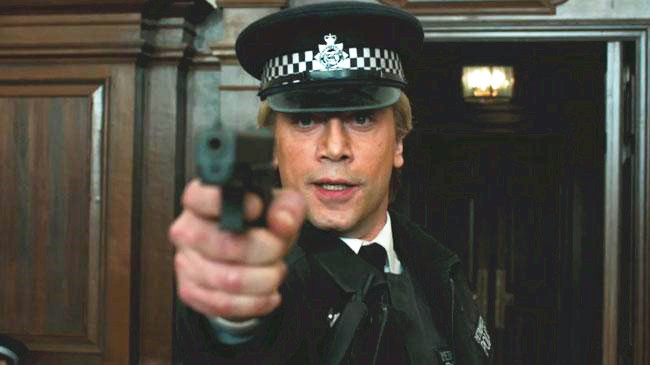
For the franchise’s 50th anniversary, James Bond (Daniel Craig) must face his past and protect M (Judi Dench) from disowned agent Silva (Javier Bardem) who begins his assault on his former boss by launching a devastating cyber attack on MI6, proposing a meta commentary regarding the competency of Britain’s secret service and the relevancy of 007 himself. It is a brave and timely question to ask for a franchise that was then half a century old. Director Sam Mendes infuses rich character-led drama with a layered thematic discord between old traditions and modern innovations, resulting in a marvellous celebration of Bond and the importance such a character has for us today – with the film exhibiting sensational acts of terrorism and hacking that all too well mirror our own world. A hero like 007 is exactly what we need, both within the narrative of the film as well as the Britannic beacon he is to the West, fending off such vile villains who operate in the shadowy realms of modernity.
There is much to love about Skyfall: Adele’s sumptuous Bassey-esque theme, Roger Deakins’s spellbinding cinematography – from the moody neon blues of Shanghai to the raging coppery fires in Scotland – the return of the DB5; and of course, the film’s wonderful cast. Old fan-favourite characters are finally brought into the Craig era, with a younger Q (Ben Whishaw) and field-operating Moneypenny (Naomi Harris) bringing fresh twists yet faithful remixes of the characters we have known and loved for half a century. Meanwhile Bardem is brilliantly psychotic as the odd oedipal Silva; and Albert Finney is artfully avuncular as Bond’s former groundskeeper Kincade.
But it Judi Dench’s M that is the film’s standout. For the first time in the series the character’s crucial relationship with Bond is explored like never before. Both exhibit psychological nuances and a tender moral consciousness. Skyfall is a bold Britannic Bond film that explores as much of Britain’s psyche as it does our hero’s. It’s a fully fledged drama snuck inside a bombastic action film, with an inventive climactic showdown at Bond’s childhood home. But most of all, Skyfall, the first billion-dollar Bond film, is a triumphant reminder of where 007 belongs. At the top.
5. From Russia with Love (1963)
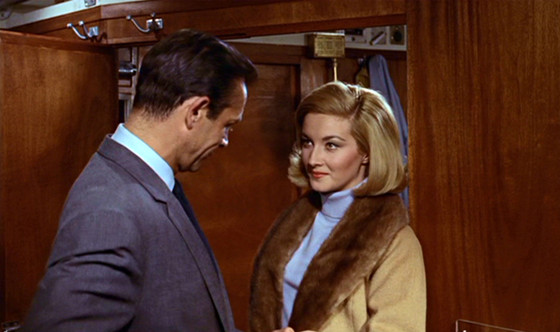
Sneaking into the top 5 is From Russia With Love, a film that faithfully adapts one of the best Ian Fleming books and what was also to be one of President Kennedy’s favourite novels. James Bond (Sean Connery) must stop a Lektor decoding device from falling into the hands of Spectre. Director Terrance Young returns from Dr No to deliver a sequel that surpasses the original, crafting a tightly-wound cold war thriller with plenty to appease the Fleming aficionado – Connery as James Bond has never looked better, and Bond has never felt more Bond, from carrying out actual spying work by checking hotel rooms for possible Russian bugs, to having a threesome with two beautiful gypsy women, and ordering green figs and yoghurt for breakfast, with coffee “very black” – all these details and instances seemingly inimical but instrumental in capturing a cool Bondian lifestyle.
Daniela Bianchi is serene as Tatiana Romanov whilst Pedro Armendáriz’s artful Kerim Bey is one the finest Bond allies in the series. But it is the strength of the villains that makes this film one of greats. Villains that are genuine threats with just the right amount of cartoonish appeal: Robert Shaw’s quiet yet bloodthirsty Red Grant, Lotte Lenya’s lascivious Rosa Kelbb, and the faceless first appearance of Spectre’s Blofeld (Anthony Dawson) – a calculating Svengali who haunts the film like, well – a spectre, pulling strings, plotting plans – this is the best use of the character period, concretizing this film as a stone-cold cold war classic, with Hitckokian levels of thrill…
4. The Spy Who Loved Me (1977)
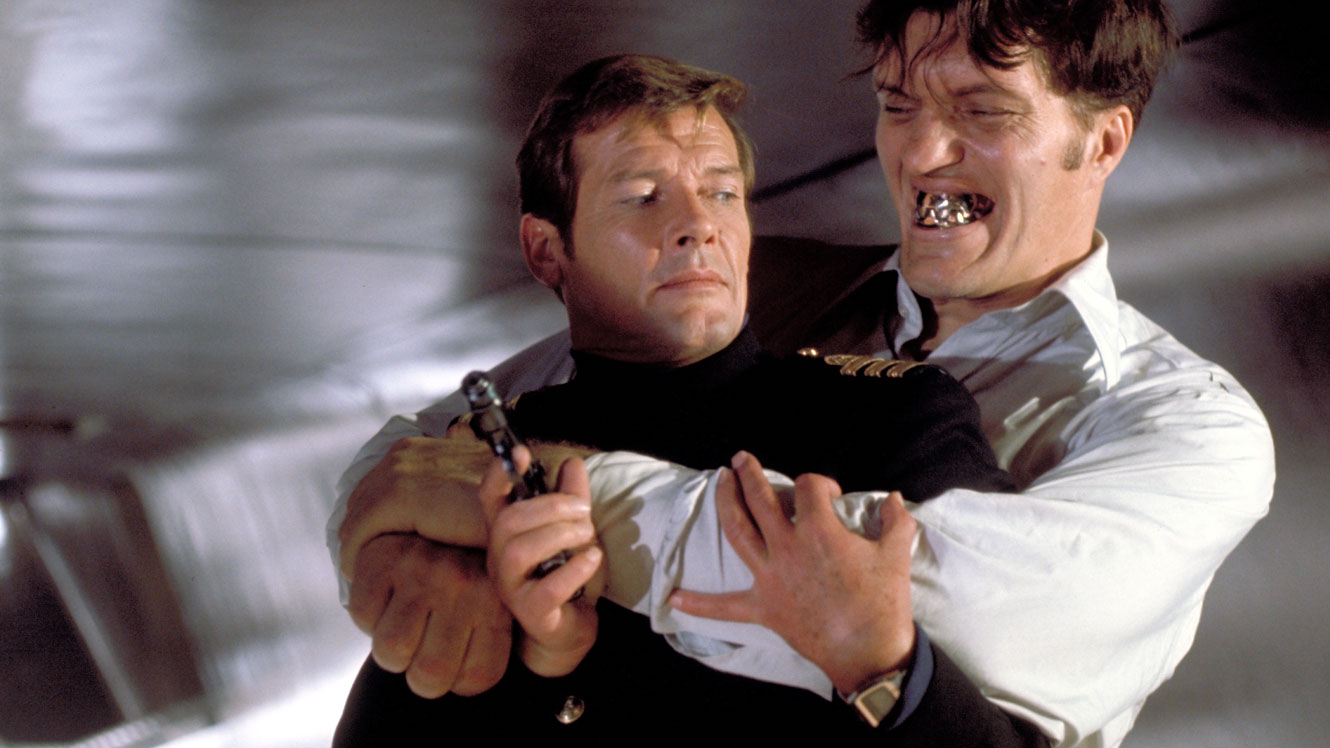
Roger Moore’s third and best outing as 007 sees him teaming up with Russian Major Anya Amasova (Barbara Bach) in the bid to foil the maniacal webbed-handed tycoon Karl Stromberg (Curd Jürgens) who has stolen nuclear warheads and plans to transform the world into a new Atlantis of his own warped aquatic creation. Director Lewis Gilbert crafts a bonkers brilliant larger-than-life adventure, with a superlative eye for spectacle – starting with an extraordinary pre-title sequence, as Bond in a canary-coloured ski-suit dives off a cliff into a seemingly fathomless depth, only to soar in a union-jack-parachute that still excites to this day. Add that to the Egyptian pyramids, the sexy Lotus Espirit that converts into a submarine and a Ken-Adam designed aquatic villain’s lair, and you have a bombastic Bond adventure that will forever live in your mind from the first time you watch it.
There is not a Bond film that is more fun. It introduced Richard Keil’s lovable yet terrifying Jaws and cements Roger Moore’s fantastical era and his interpretation as 007 – one that is equally legitimate and is certainly up there with Connery as the two great 007s. Throughout the film he’s in his tuxedo-flared element – forever quipping and raising an eyebrow, bringing you effortlessly along this zany ride with the grace, charm and élan that would make watching him on screen such a treat. Moore keeps the British end up with his fun flamboyant skill to entertain. As the film’s gorgeous theme by Carly Simon reminds us, nobody does it better.
3. Goldfinger (1964)
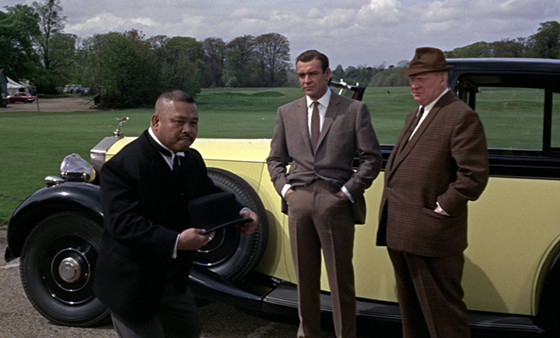
The film that sparked Bond-mania during the 1960s reaches number three – perhaps the most well-known 007 adventure of them all, with the ubiquitous Goldfinger (Gert Fröbe), a greedy businessman intending to attack Fort Knox’s gold supplies if James Bond (Sean Connery) doesn’t stop him in time. In this one film director Guy Hamilton manages to effortlessly incorporate the essential iconography that springs to mind whenever we think of the series: the classic DB5 with its ejectors seat, Shirley Eaton’s golden girl, Bond faced with a giant laser about to split him in two, Harold Sakata’s stout Oddjob, an epic raid on Fort Knox, Shirley Bassey’s brassy Bond theme – the greatest of theme of them all – and, of course, Honour Blackman’s Pussy Galore – the sexiest, sassiest Bond girl, not afraid to give 007 a judo kick or two.
Everything in this film is iconic, wrapped up in a spiralling adventure. Its pre-tittle scene is its own mini-movie, and Connery himself is on top form as 007; his white suit and red carnation being an image that will last forever in cinema history. It really is the gold-standard for what these films should be – thrilling, classy adventures that are escapist, bombastic and memorable. It’s a Bond film that fits every mood and situation, the one you show to Bond-novices. It is the quintessence of everything 007 and why he always endures.
2. Casino Royale (2008)
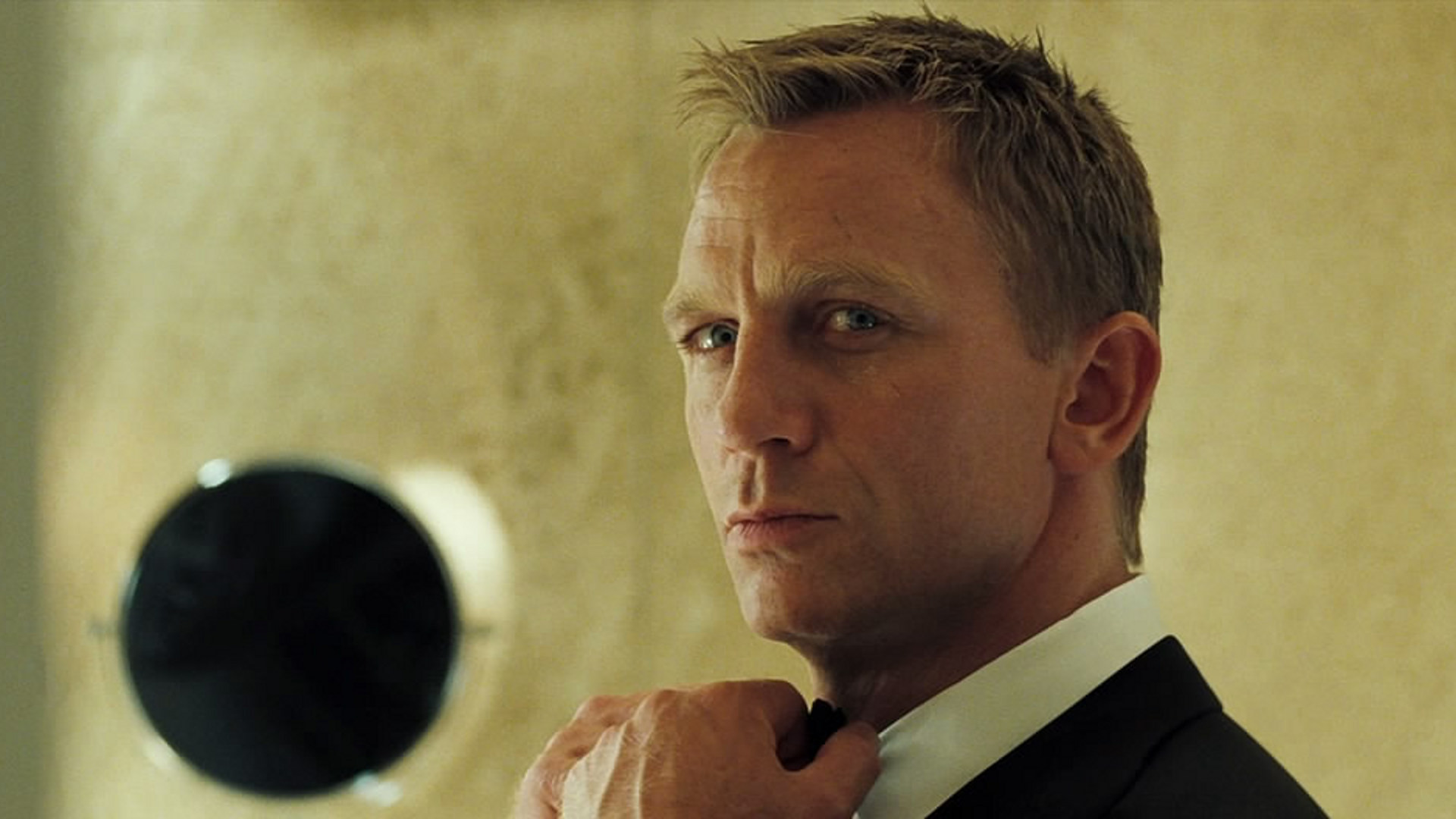
A new era launched to stellar success with Casino Royale, which saw a new blond-haired blue-eyed 007 (Daniel Craig) preventing terrorist financer Le Chiffre (Mads Mikkelsen) from winning a high-stakes poker game at Casino Royale. Aided by bewitching British treasury agent Vesper Lynd (Eva Green) this younger Bond falls in love, his armour stripped from him before he is hardened by betrayal and heartbreak. One of the more romantic 007 films takes a new look at the Bond character, befitting a grittier post 9/11 world. This Bond is gadget-less. He’s tougher, bolder, and more vulnerable with inexperience – he bleeds and blunders – a rough tool that throughout the film we be sharpened by tragedy and woe. It re-examines the Bond character.
With this being the last of the Ian Fleming novels to receive an official Eon adaption, it is refreshing to see 007 coming into the super-heroic force we know him as and seeing the mistakes that will take him there. Director Martin Campbell re-launched Bond into the cultural relevancy of the noughties and beyond. Clichés are dispelled with in favour of visceral realism and suspense. Campbell somehow makes a card game one of the most exciting moments in the series.
Chris Cornell’s theme You Know My Name expertly vocalises this Bond’s eventual devil-may-care attitude. Its action sequences are exceptional too, from parkour running to an exploding embassy – and one of the most wince-inducing torture scenes of all time. It’s a prime example of Bond living hard, fast and large, always on the edge. It would very quickly silence naysayers and establish Daniel Craig to be one of the greatest Bonds of them all, bringing to his approach a gravitas and modern urgency – his piercing blue eyes turning cold and tender when they need to be. Truly enthralling stuff.
1. On Her Majesty’s Secret Service (1969)
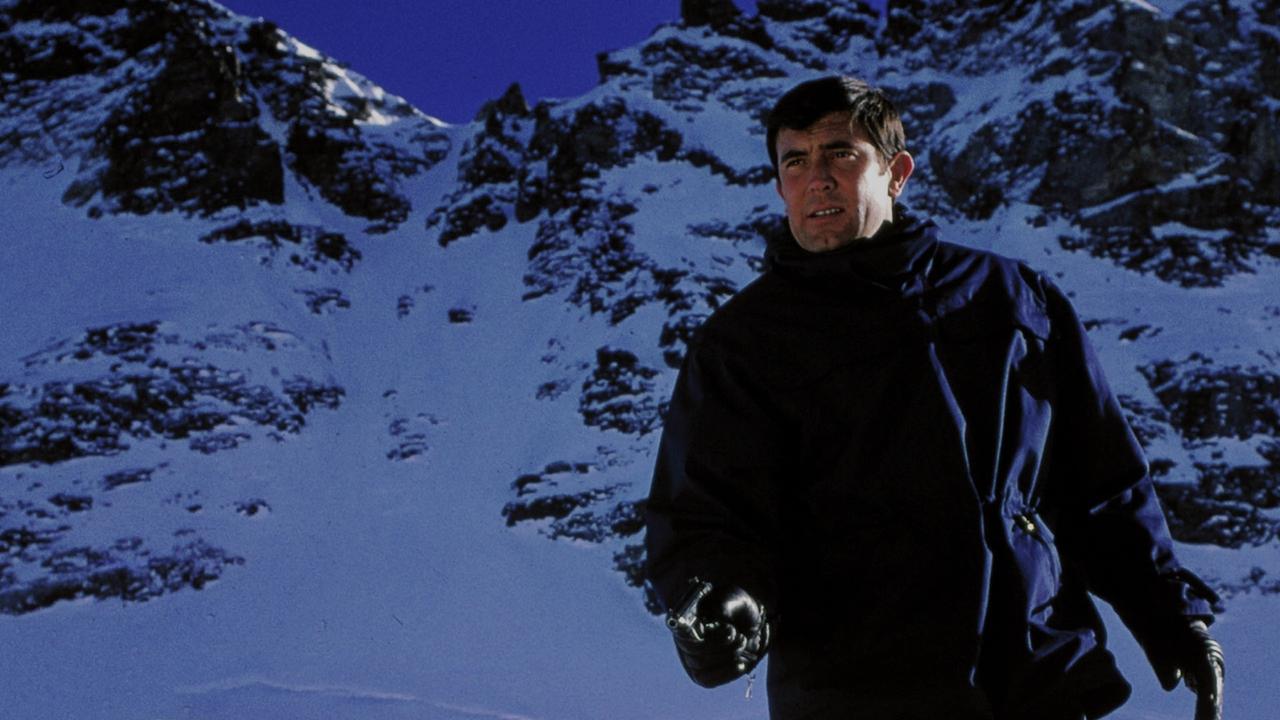
James Bond (George Lazenby) searches for mastermind Ernst Stavro Bloefeld (Telly Savalas) whilst falling in love with young Coutnessa Tracy (Diana Rigg). On Her Majesty’s Secret Service received a lukewarm reception upon release and was largely considered the worst Bond film for a long time, partly due to the myopic view that if Connery wasn’t in it, it wasn’t really a Bond film. Of course all the Bond actors have had a tough time of measuring up against the original who made the role immortal, but George Lazenby had the toughest of times. Not only was he the first to break the mould and prove that Bond was bigger than one actor, but he himself was not an actor at all, instead a balsy baller from the Bush. His brazen charm that ensured he won the 007 role is in itself legendary and a very 007-esque gamble that paid off for the generations of fans who will discover this film to be the best in the series.
Lazenby performs terrifically well as Bond, partly because he doesn’t need to act – from the handsomeness to the swagger and womanising, the man simply is Bond, while the late Diana Rigg’s Tracy is the finest Bond girl in the series. As well as fiery, witty and intelligent, she possesses the same amount of guts, agency and vulnerability as her partner. Rigg’s portrayal is the perfect mirror to our hero whilst also being a strong realised character in her own right. She challenges what the Bond girl could be, whilst brining a complex human dimension to a role that is often scoffed at. Her charming performance has not been surpassed since.
Tracey’s love story between 007 and the romance in general is so unusual and unorthodox for a Bond film, but here it works, with a lovey montage of smaller moments selling us on their blossoming relationship, set to Louis Armstrong wonderfully romantic We Have All the Time in the World. Any lesser director would have dismissed or mishandled these smaller, more emotional moments. But former editor Peter R. Hunt, with his keen-eyed direction, knows exactly when to slow down and when to speed up, with action, chases and fight sequences made visceral with quick cuts and dynamic angles. Savalas’s snobby Blofeld is a worthy mental and physical match for Bond in this film – a true rendition of the literary character and one of many lovingly translated interpretations of Fleming’s greatest novel.
Awe is to be experienced at the film’s sublime locations, from the Swiss alps to the Portugal sea – with the particular zeitgeist of 1969 giving Majesty’s an indelible 60s purple-themed panache. John Barry is at the height of his powers as a composer, delivering an energizing instrumental theme that is so great it at times rivals the actual Bond tune. And how can one not talk about this remarkable film’s ending? Tracey’s murder. One of the most heart-breaking endings in all of film – ever. Its unexpected but also inevitable. It is insanely heartfelt too and proof, if anything, that hiring Lazenby as 007, seeing him failing to hold back his tears, was one of the best decisions the franchise made. On Her Majesty’s Secret Service is a film that reminds us that life can be just as cruel as it can be kind – but like Bond we must drink up every moment – we must fully experience all our time in the world.